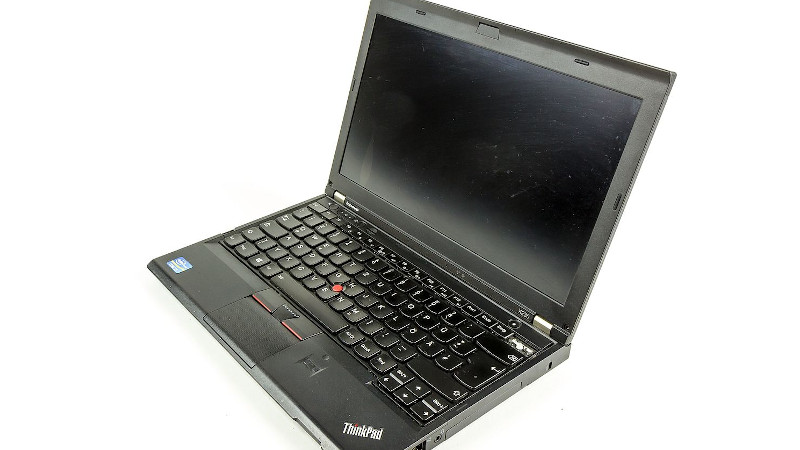If you look at the computer in front of you, it will have an array of input devices. A keyboard and mouse, a touch screen, maybe a microphone, or even a gamepad. Each of them will have its moment to shine, and you’ll probably have put some effort into their selection. But when it comes to a computer, almost anything connected to it can be an input device in some form, as long as it provides some form of machine readable parameter.
Consider your laptop: it knows when its lid is closed such that it can put itself to sleep. Even that can be used as an input device with a little ingenuity, as [veggiedefender] has done with “open and shut“, a Morse keyer using opening and closing the laptop lid as its key.
The software for GNU/Linux distributions is a surprisingly accessible set of shell scripts that attach themselves to ACPI events surrounding the lid switch. In use it seems a little cumbersome, but we suspect its real value is not in repeatedly slammin the lid to produce Morse text input. Instead with many lid switches being magnetic reed switches an operator could simply wear a ring with a magnet and tap out their text every bit as quickly as they could using a traditional key.
We like the idea, and could see it being popular among radio amateurs. It’s a theme we’ve visited before with a more traditional key, and if you’d love to try but don’t know any Morse then perhaps this may help you learn.
Thanks [Kickaxe] for the tip.
Header image: Raimond Spekking / CC BY-SA 4.0.















Old news
Sorry, must have seen it on Reddit a few months back.
Sorry, must have seen it somewhere else a few months back.
Or not:
https://hackaday.com/2020/04/04/typing-by-slamming-your-laptop-closed-repeatedly/
It’s time to work on that search function…
But at least I don’t have to adblock this one because of the animated Gifff.
Thanks!
I’ve seen enough broken hinges on electronics, I will pass on this one.
If that’s a real (xx30 and below) thinkpad, those hinges can take it, and they are easily replaceable and available.
I’ve gotten the idea from various HaD comments like this one that Thinkpads have a reputation for durability these days.
I find that funny because 20 years ago a company I temped at had stacks and stacks of Thinkpads in a back closet mostly with broken hinges but also some failed keyboards. I suppose they could have been abused but they had switched laptop brands years previously and I didn’t see any of the other laptops broken in these ways. This left a really bad impression of Thinkpads for me.
20 years is plenty of time for them to have re-designed and turned it around. But I’ve never really experienced a newer Thinkpad so it still seems weird to see things like this. I imagine one getting out a single SOS and then the lid falls off.
Yes, I’ve got a 385XD that might be described as “clinging to life” it’s a bit battered. However, I don’t think they were particularly worse than others of their day, and they toughened them up as the 90s came to an end. There was no such thing really at the time as business laptops and consumer laptops, consumers as a class did not hugely buy laptops, so all laptops were business laptops. As this became a “thing” as we went into the 2000s they definitely began to diverge with business machines staying nearer 2K and consumer laptops getting cheaper and cheaper and eventually there were sub $500 machines available. This meant that a lot of laptops through the 2000s had a cheap and trashy build and thus business laptops of leading brands were seen as more durable. And indeed with consumer laptops subsidizing CPU and chipset volumes, they could likely afford to enforce this perception without affecting their price points much, by adding more durability. Therefore relative to the low end of the market Thinkpads for a decade of perhaps 98 onwards were among the more durable of non-special purpose laptops.
Seems like that would be very slow Morse code
QLF
hihi
This project sponsored by the laptop hinge council :)
2006 called to let you know a saner solution has existed for literally decades….
https://www.ibm.com/developerworks/library/l-knockage/index.html
Niiiice, upvote.
Impractically unergonomic.
If you get a scrap of sponge rubber such that the lid springs back on its own it is workable
Who else got reminded of Neal Stephenson’s 1999 “Cryptonomicon” ? One of the characters needs to read a document but is worried about “Van Eck phreaking” so he does a script to read the file using the power led blinking morse code. The book also included the perl script written by Ian Goldberg for the “Pontifex” cryptographic algorithm designed by Bruce Schneier. A fun read..
In Cryptonomicon he is also spoofing the Van Eck phreaking with erotic text… So he’s writing code using Morse while his watchers think he’s reading pervy stories. Great book and really set the scene for cryptocurrencies a few years later. Or at least, what bitcoin zealots _think_ cryptocurrency should be :-)
Great book, every hacker should put it on their list.
moreeee keys, more keys !
https://klawiatura.wordpress.com/